+86 311 8533 5186
Pliers is an ancient invention - we had no idea who invented it in the first place. What we do know is that in the early metalworking practice, clamp tools were essential for casting and blacksmiths. No one knows who invented pliers in the first place, people have been using metal for thousands of years before Christ, and in order to use metal, they need tools like pliers to hold hot and molten materials. One of the oldest surviving images of pincers is that of Hephaestus, the Greek god of technology, fire, and blacksmiths, who made the weapons of the gods on Mount Olympus. It is said that the first pliers were invented 3,000 BC and are most likely made of wood. It later became stronger material, including bronze ,steel.
Pliers are one of the most commonly used tools and are used in many places, including construction work, plumbing, repair and housework. Without a set of pliers, the kit is incomplete. They are used to make grips, fixing screws or nuts, bending, and helping to cut a variety of metals and objects. They are typically used to fix grip, hold an object to hammer, burn, or slice. They're a bit like wrenches. Pliers are simply levers that help with manual labor.
Pliers are a very basic tool with different types and designs, and a pair of pliers can help you accomplish a lot of things. The pliers are simple in design and have only a few parts, but each part has very important functions.
Most of us think of pliers when we need sharp wires. However, in the electrical industry and other workshops, pliers are a basic requirement for operators.
Pliers are used for pulling wires as well as objects.
They are also used for splicing, bending and tuning.
Most of the time people mainly use pliers to remove insulation from wires.
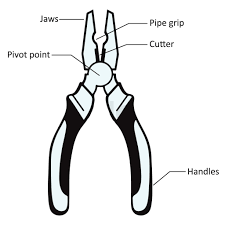
Nose (also known as jaws): This is the working end of the pliers and the part that varies by type.
Fulcrum (also known as pivot points): The pivot is the center of the jaw and the center of the handle connecting the pliers. Pivot points are where you use enough force to get the jaws to perform their functions.
Cutters: This is a sharpened part, located at the bottom of the jaw near the pliers fulcrum. It can be used to cut materials such as wires, cables or other materials.
Handle: This is the hand-held area. The handles are straight and curved, usually coated with material for better grip, but they can also be bare metal.
Pliers can be broadly divided into three categories depending on their different functions:
Cutting class: This category is divided into side-cutting and end cutting styles and can be used to cut wires, bolts, nails, and other materials.
Handheld class: Pliers in this category have no cutting function and can only be used to store objects of various thicknesses.
Multi-functional class: The jaw configuration of these pliers allows the user to perform cutting and holding operations.
Here are some pliers from Probuilt:
The jaw of the curved claw clamp has 3 times more grip than the traditional lock clamp, eliminating the need to slide or peel. Made of high-grade heat-treated alloy steel, it has great toughness and durability, and the teeth are hardened.
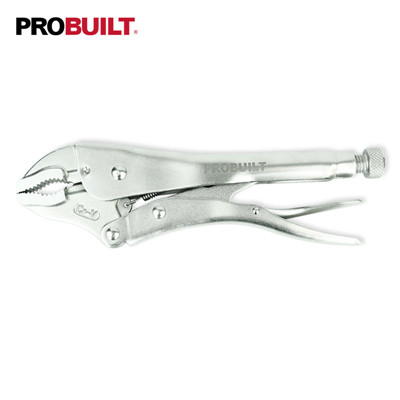
The characteristics of Curved Jaw Locking Plier:
(1)CR-V steel jaw for maximum durability
(2)Quick, easy locking and release action
(3)Guarded release helps keep work fast and safe
(4)Turn screw to adjust holding pressure and fit work
(5)Ergonomic bi-material anti-slip grips
Bolt cutters are tools for cutting chains, padlocks, bolts and wire. It usually has a long handle and short blade with composite hinges to maximize lever and cutting forces.
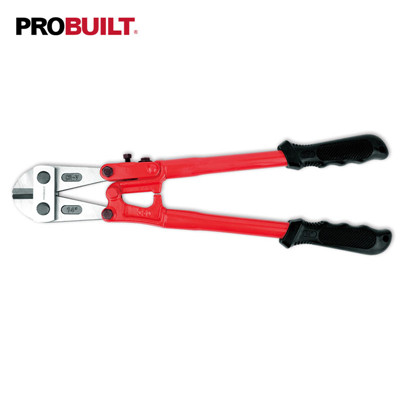
The traits of Bolt Cutter:
(1)Side adjustment absorbs the cutting shock
(2)Aligned cutting edge
(3)Advanced ergonomic handle
(4)High quality sharp blade
A pipe wrench is a common pliers used to tighten and release threaded tubes. A pipe wrench is an adjustable wrench. The top and bottom jaws are close whenever forward pressure is applied to the handle.
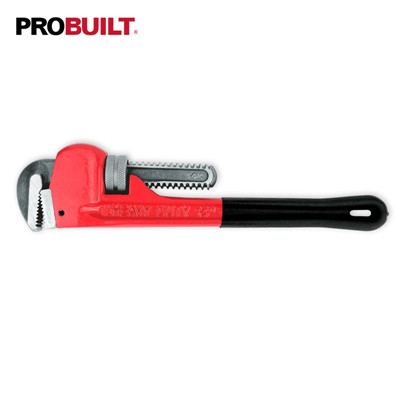
Pipe Wrenches characteristics:
(1)American design
(2)Hardened and tempered teeth
(3)High torque with long service life
(4)Ergonomic handle
Mini pliers can enter small spaces. These pliers are made of drip-forged steel and have strength and durability.
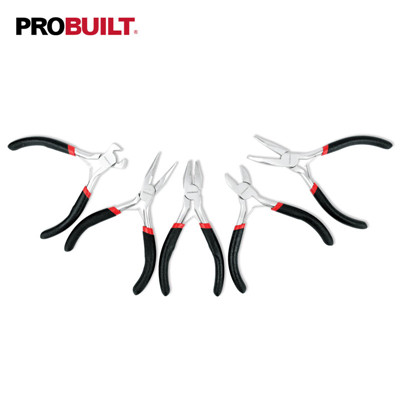
Mini Plier traits:
(1)Drop forged carbon steel
(2)Heat-treated
(3)Fully polished
(4)Double dipped grip handle
The jaws of these pliers have an angled edge and are designed to cross a thick line. They are quite robust and can also be used to cut nails. Therefore, they are useful in both carpentry and electrical work.
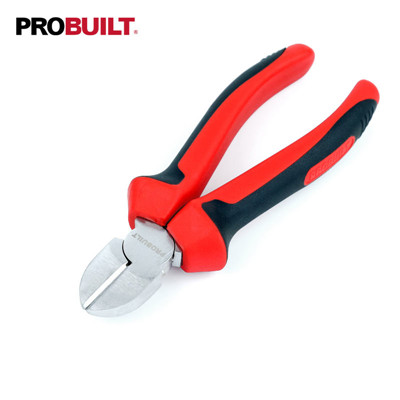
Diagonal Cutting Plier feature:
(1)Drop forged Chrome-Vanadium steel
(2)Heat-treated
(3)Fully polished
(4)Bi-material comfort grip handle
Groove joint pliers, also known as tongue and groove pliers, are commonly used to grab irregularly shaped objects. They can also be used to clamp materials. They are also commonly used to turn and secure nuts and bolts.
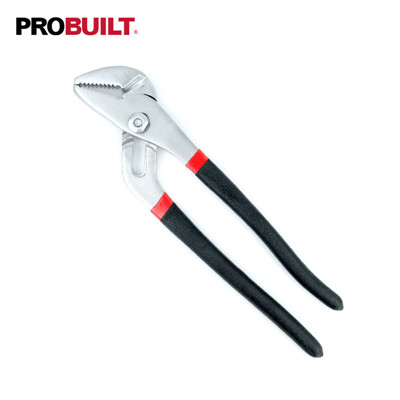
The feature of Groove Joint Plier:
(1)Drop forged carbon steel
(2)Double dipped grip handle
These multi-purpose tools have three separate sections on the chin. From the tip, the first part is a jagged grip surface. The circular jagged part behind this makes it easier to hold tubes and other thick round objects.
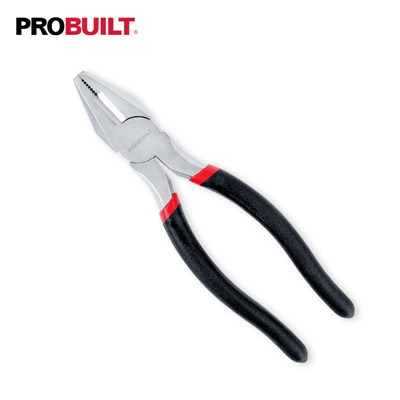
The traits of Combination Plier:
(1)Drop forged carbon steel
(2)Heat-treated
(3)Fully polished
(4)Double dipped grip handle
These pliers are closely related to adjustable wrenches and have adjustable fulcrums to change the width of the jaws. They are commonly used in piping applications and can do many of the same work as wrenches.
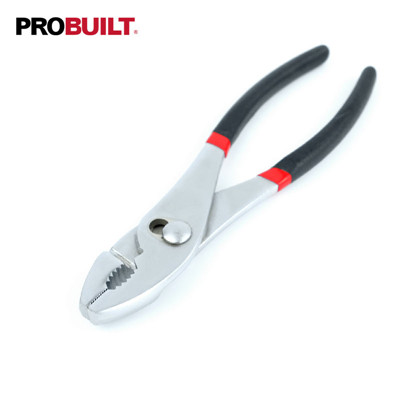
Slip Joint Plier feature :
(1)Drop forged carbon steel
(2)Heat-treated
(3)Fully polished
(4)Double dipped grip handle
Also known as needle and nose pliers. Pliers.
Longnose pliers type: long nose pliers, curved nose pliers, hose grip pliers, long nose pliers with spring, long nose electrician pliers.
The nose of this tool is elongated for more precise accuracy and contains cutting edges near the base. It is a versatile tool for bending, shaping and cutting wires.
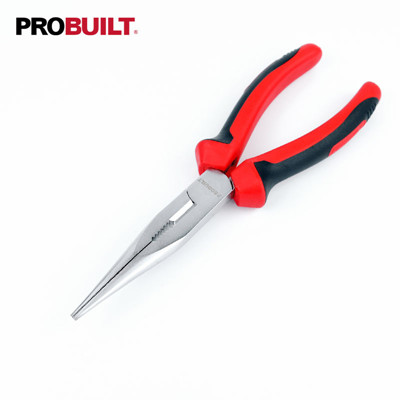
The characteristics of Long Nose Plier:
(1)Drop forged Chrome-Vanadium steel
(2)Heat-treated
(3)Fully polished
(4)Bi-material comfort grip handle
These pliers are employed in a wide range of industries, including armor, electrical, fishing, jewelry making and network engineering. Most families will have one in the kit.
Proper care can extend the life of the pliers and use them more smoothly.
(1) Rinse with water after each use, especially after use in salt water.
(2) After washing the pliers, dry with a towel to absorb the moisture on the surface. Clean and maintain the pliers at least once a month.
(3) Occasionally use anti-rust spray to treat pliers. Spraying anti-rust spray on the surface of the pliers can effectively prevent tool rust. Apply a thin coat of engine oil to the metal parts of the pliers.
(4) Store them in a dry place so that the blades and tips of the jaw are not knocked down and passivated. The toolbox is ideal for storage and can be found quickly the next time you use it.
(5)Avoid using tweezers in acidic environments as this will accelerate corrosion.

Copyright © Sinotools Industrial All Rights Reserved.. Technical Support: